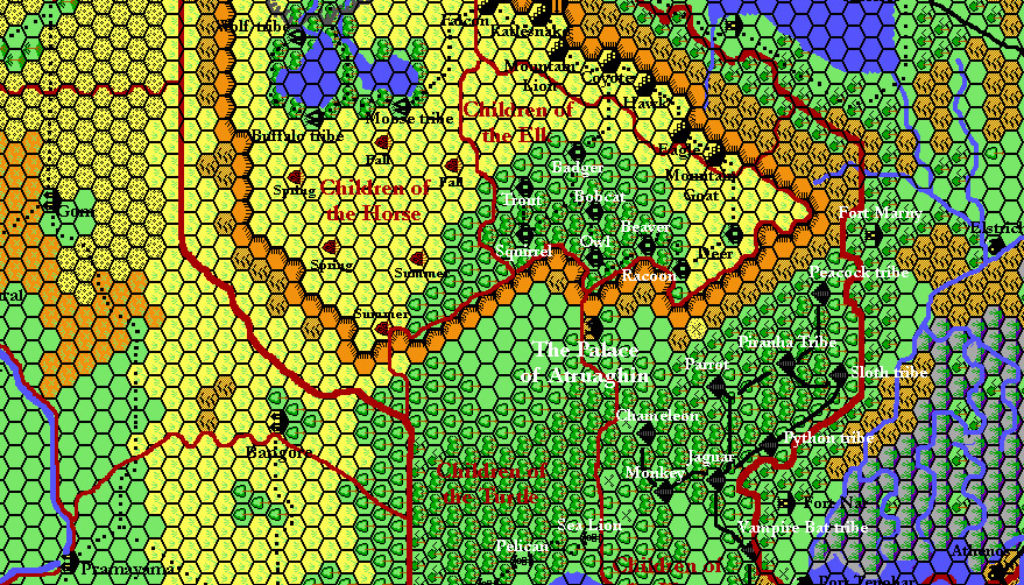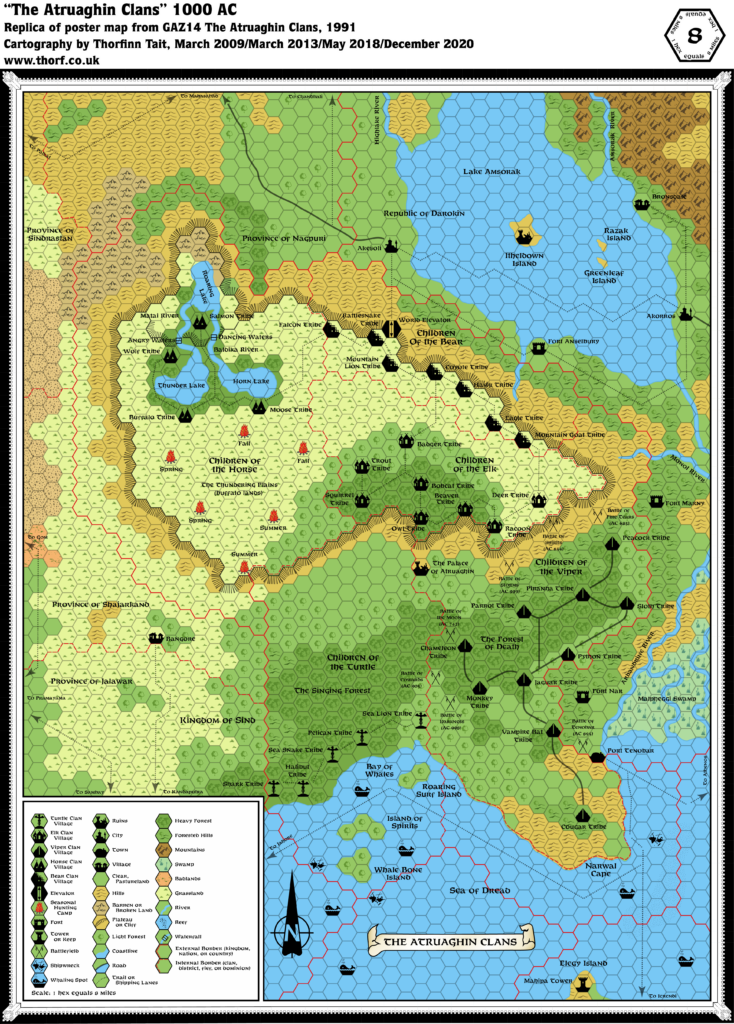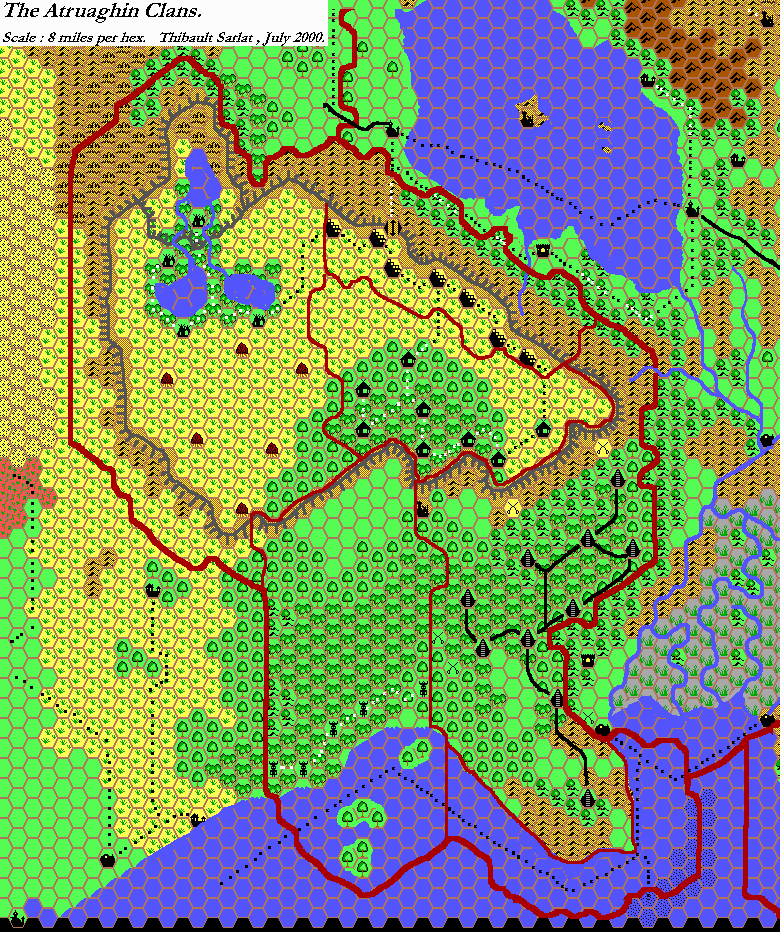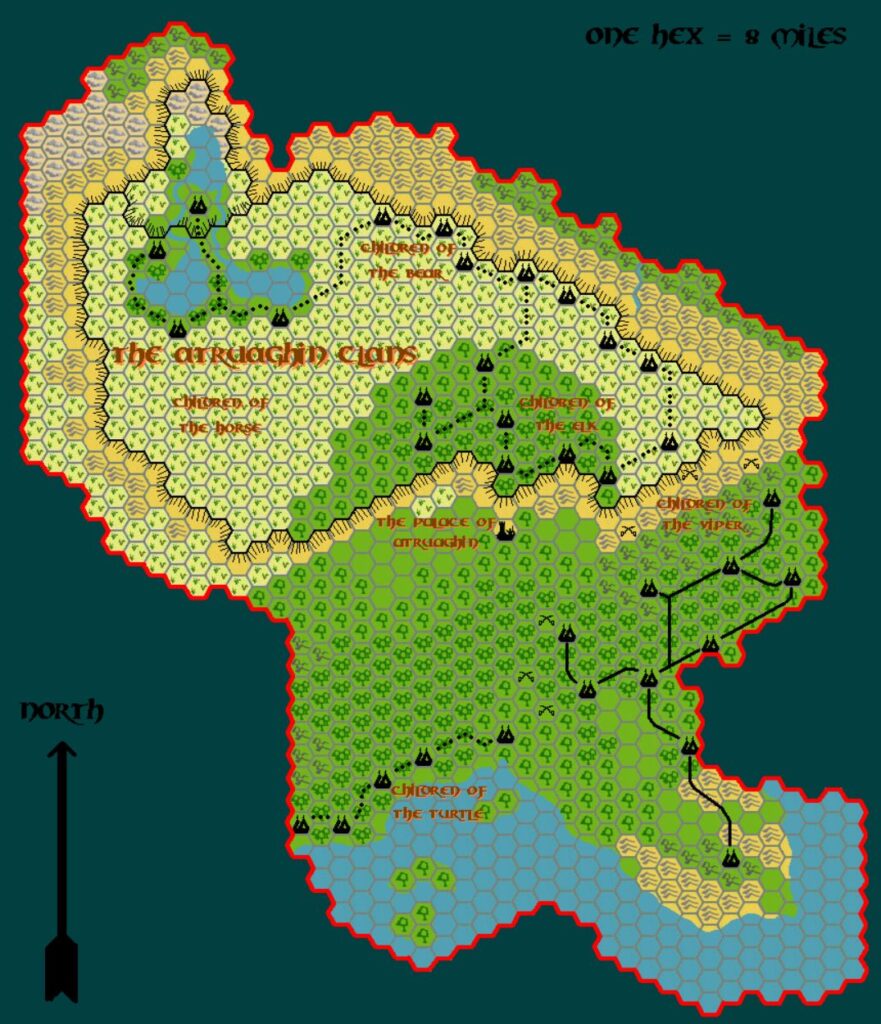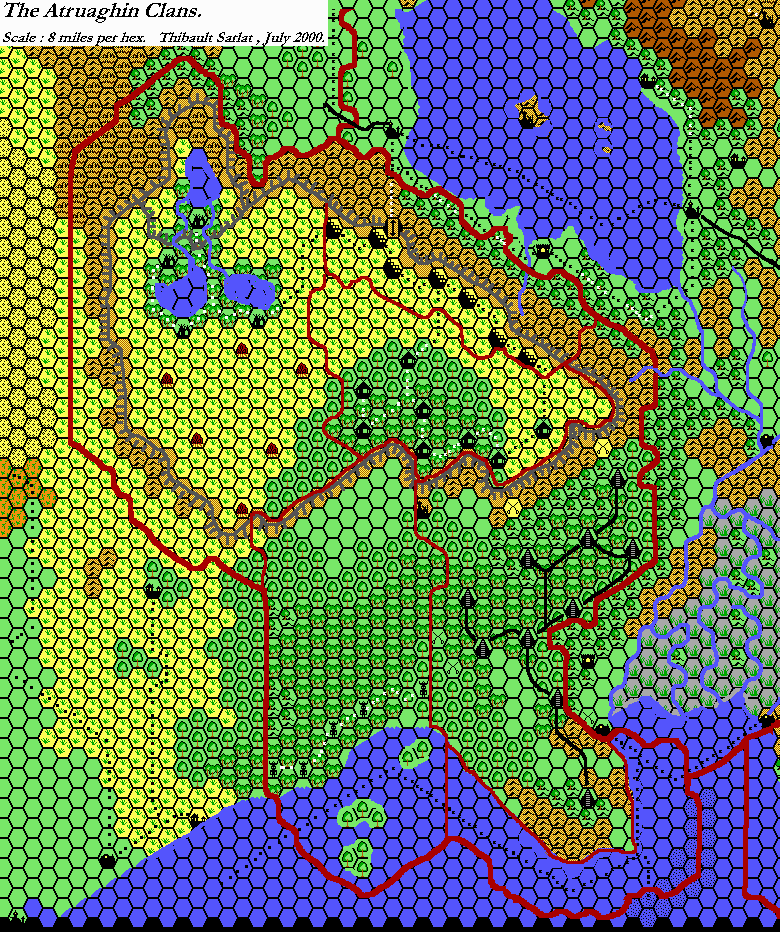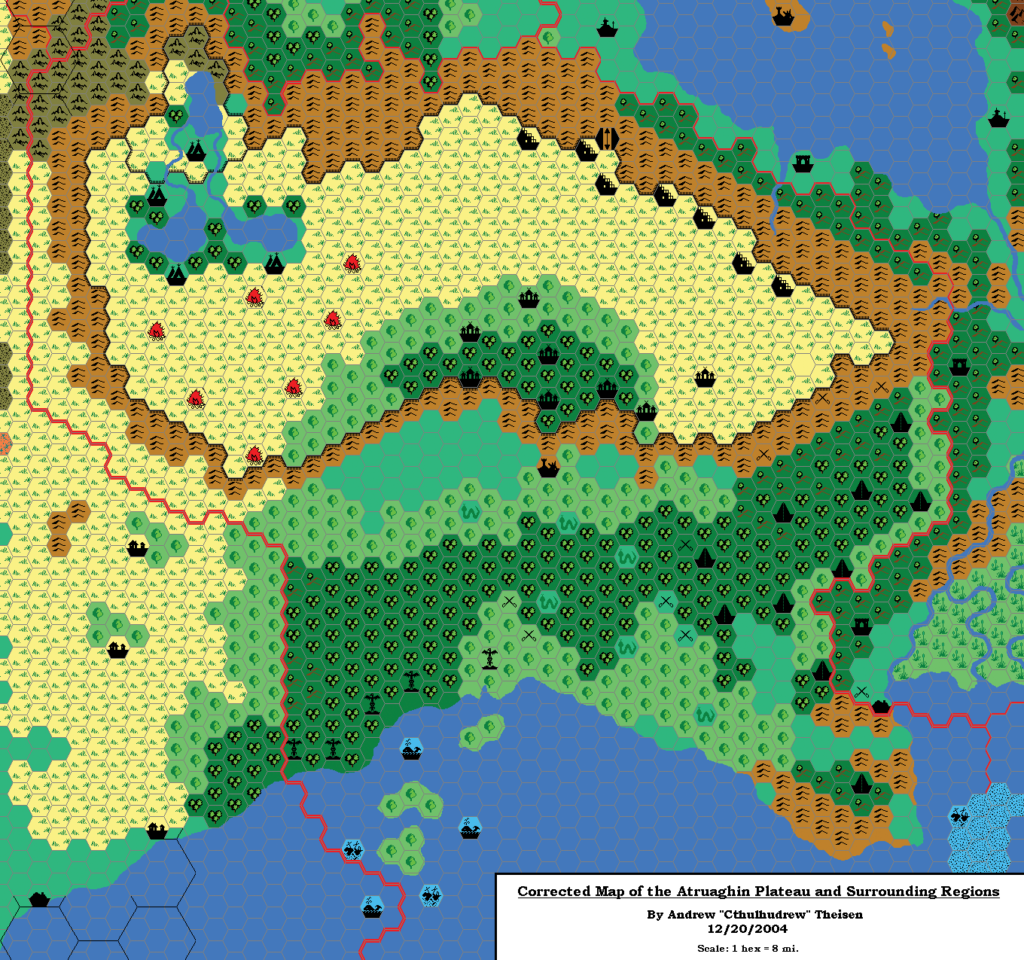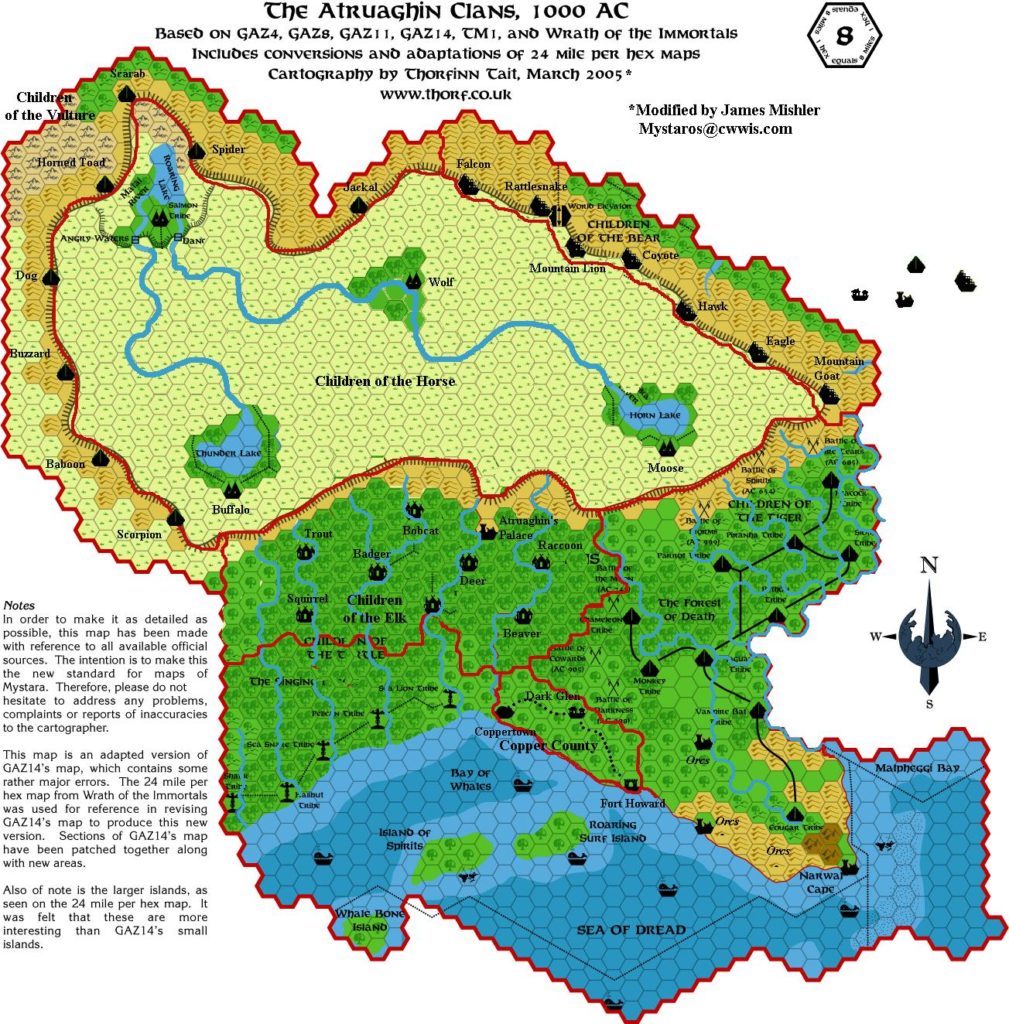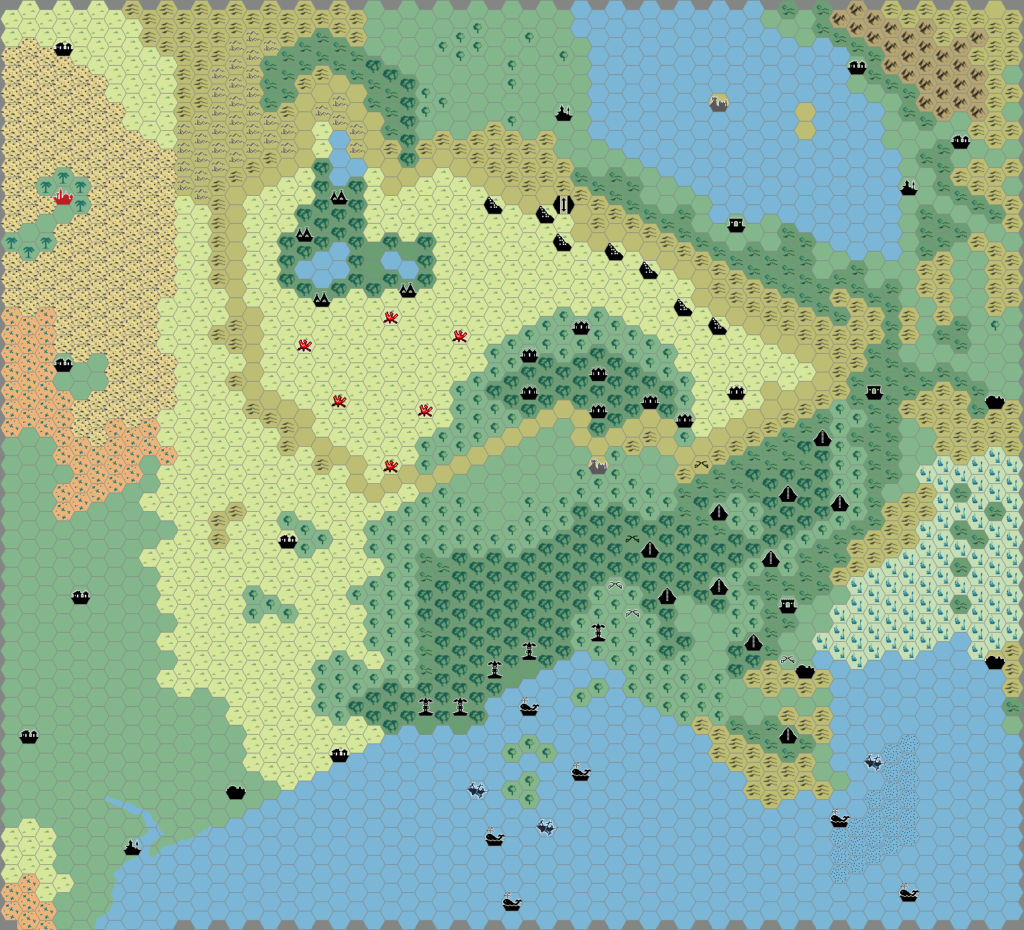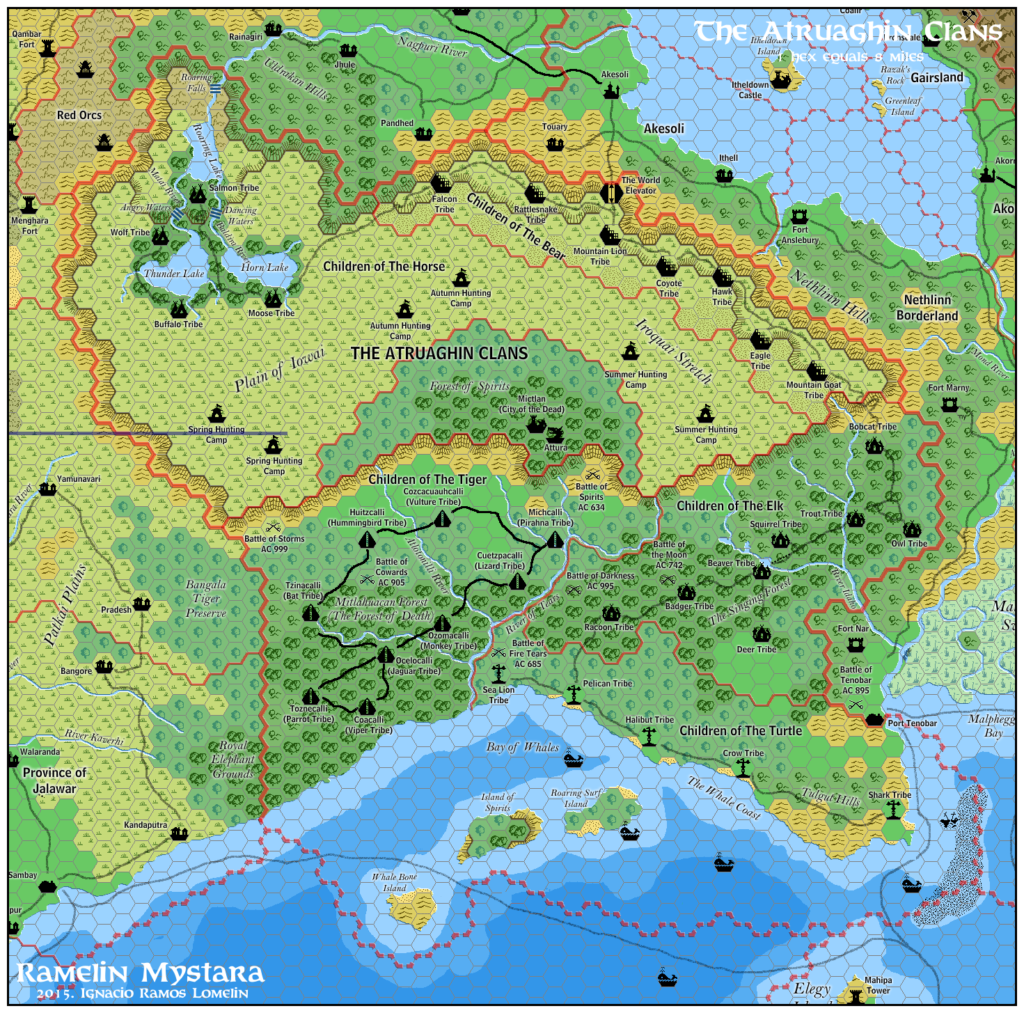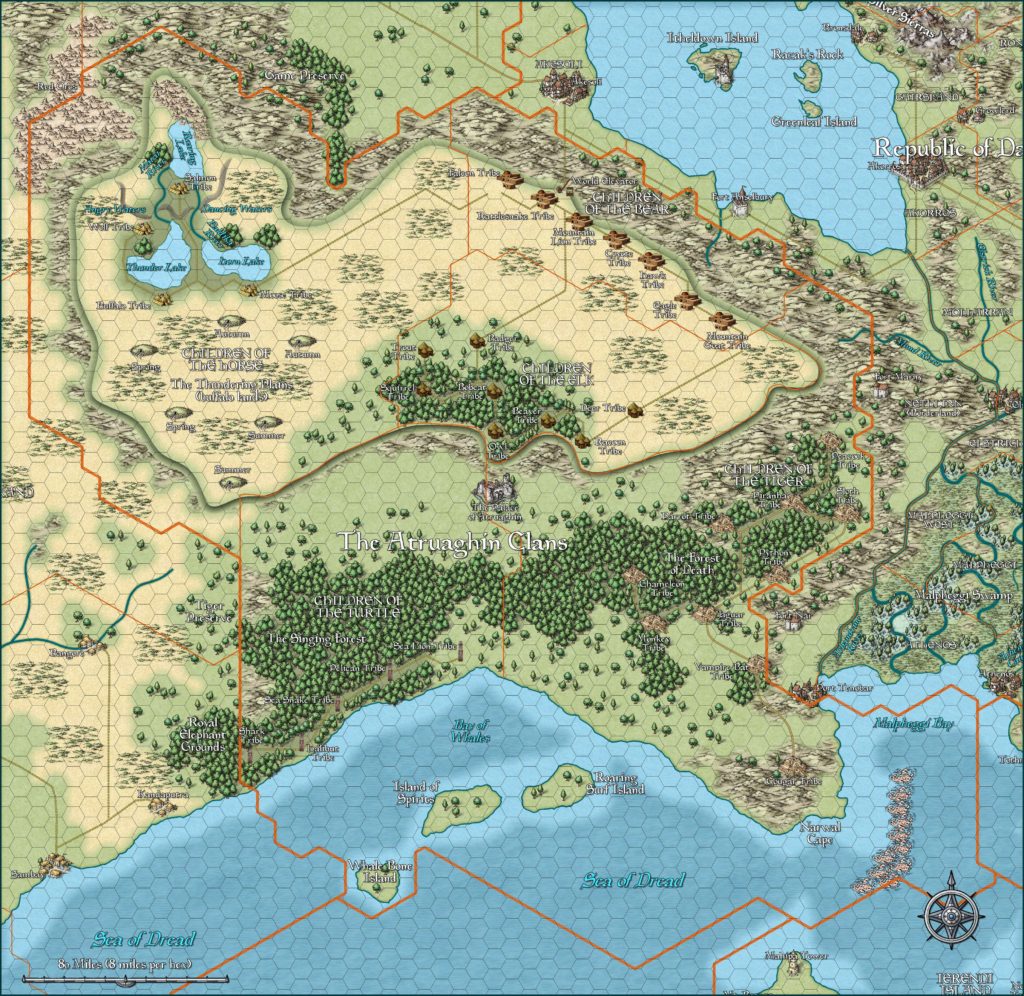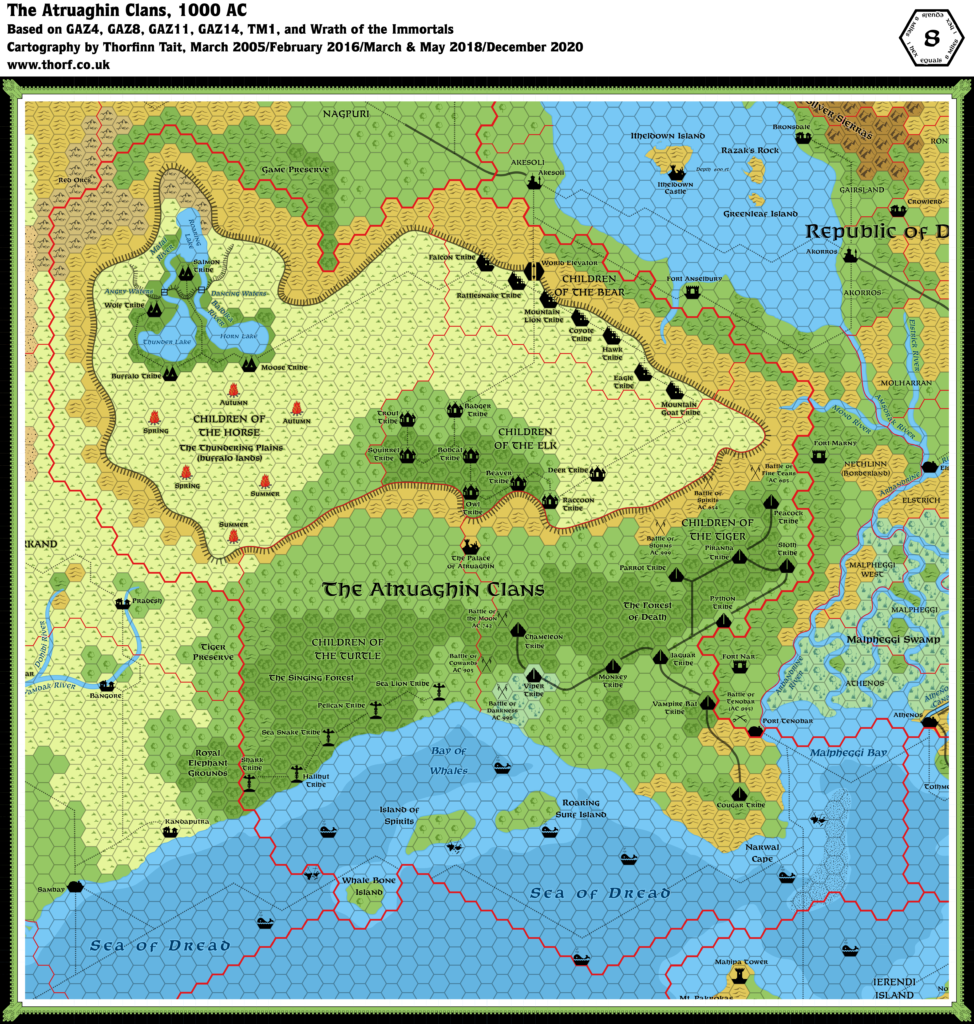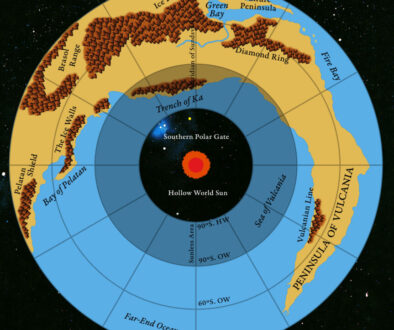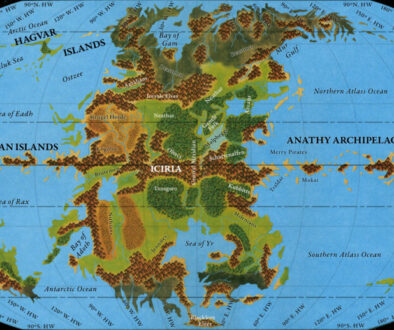Thibault’s Atruaghin, 8 miles per hex v1
This must have been one of the last, if not the last map Thibault posted using his old Grid hexes, with art pointing to the west. Its date, May 2000, places it after he had finished work on revising the art so that it used upright hexes.
It’s also his first independent map of Atruaghin, although most of it had certainly appeared on previous maps — most notably Sind, 8 miles per hex. As noted in the introduction for that map, this map preceded fan attempts to reconcile problems with Atruaghin’s map; accordingly, Thibault did not revise Atruaghin to match the 24 mile per hex maps, instead sticking to GAZ14’s map.
The original May 2000 map is no longer available to us. The version below is a later revision, adding the black hex grid. The date for it is uncertain, but seems likely to be September 2001.
Fan-made Map by Thibault Sarlat (c. September 2001)
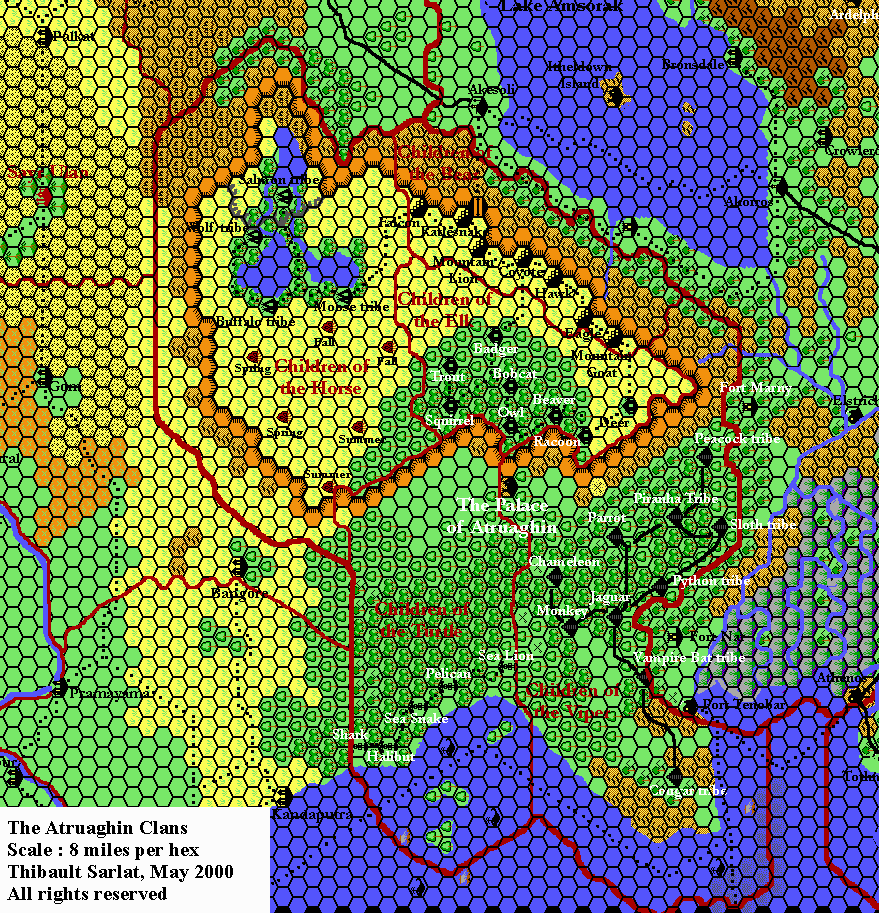
This is an original map created by one of Mystara’s excellent fan cartographers. For more information on the cartographer, including a gallery of all their maps, see also Appendix M: Mappers of Mystara.
Sources
- GAZ11 The Republic of Darokin (1989) (PDF at DriveThruRPG)
- GAZ14 The Atruaghin Clans (1991) (PDF at DriveThruRPG)
References
- All of Thibault’s maps at the Atlas of Mystara
- Thibault’s entry in Appendix M: Mappers of Mystara (upcoming)
- Thibault’s author page at the Vaults of Pandius
Chronological Analysis
This is a fan-made map. It was published in May 2000 and revised in September 2001. The updated Atlas version of this map is not yet available. See also Appendix C for annual chronological snapshots of the area. For the full context of this map in Mystara’s publication history, see the upcoming Let’s Map Mystara 2000 and 2001. (Please note that it may be some time before the project reaches this point.)
The following lists are from the Let’s Map Mystara project. Additions are new features, introduced in this map. Revisions are changes to previously-introduced features. Hex Art & Fonts track design elements. Finally, Textual Additions are potential features found in the related text. In most cases, the Atlas adopts these textual additions into updated and chronological maps.
Coming Soon

